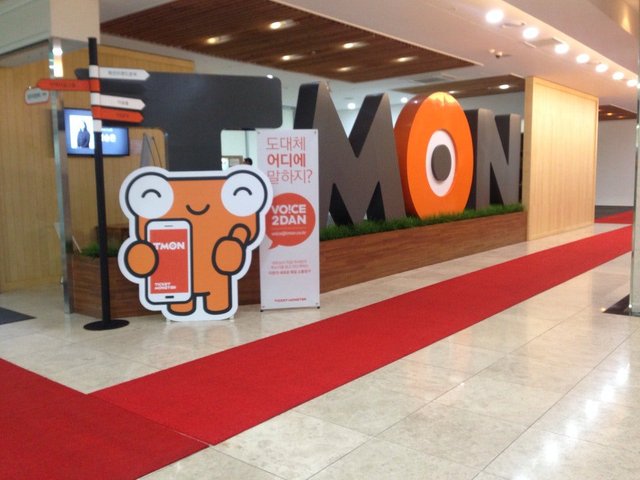
Blog Source: https://www.coindesk.com/binance-polychain-back-32-million-tmon-crypto-stablecoin-terra/
Yet another stable coin is attracting big investors.
Announced Tuesday, the founder behind a $1.4 billion startup unicorn called TMON is revealing he has raised a $32 million seed round to build a stable coin called Terra. But while a number of startups have deployed stablecoins cryptocurrencies engineered to track the price of another asset, usually fiat currency – Terra comes with a notable addition: an existing user base.
Created by Korean entrepreneurs Danial Shin, who founded and chairs TMON, one of the top e-commerce websites in South Korea, the Terra project is launching with a significant number of partners that already reach 40 million customers. Those partners, who will together form the Terra Alliance, a group of e-commerce sites that are interested in incorporating the stable into their business, include Woowa Brothers, Qoo10, Carousell, Pomelo and TIKI.
According to a spokesperson for the project, those companies, combined, take in $25 billion in sales.
"We've banded together all the e-commerce platforms in Asia that are not called Alibaba or Amazon to push Terra into the hands of many many people," Shin told CoinDesk.
It's no wonder that the round includes quite a few notable crypto investors, including Polychain Capital, FBG Capital, Hashed, 1kx, Kenetic Capital, Arrington XRP, Binance and others who were not disclosed.
"We are pleased to support Terra, which sets itself apart from most other blockchain projects with its established and immediate go-to-market strategy," said Polychain's Karthik Raju in a statement.
Echoing that, Ella Zhang, head of Binance Labs, said in a statement:
"While we see many stablecoins coming out, Terra's journey is especially meaningful as they are designing one of the few price-stable protocols with existing, working and strong go-to-market strategy and usage."
That use, according to Shin, is in acting as an economical digital payment system, compared to credit cards.
He told CoinDesk, that a significant portion of TMON's annual losses take the form of credit card fees. And he's sure other retailers experience the same.
That said, if companies like his can lower transaction fees dramatically, he believes they stand a better chance against the industry giants.
For the new alliance of companies, "the commitment really is that they will work together on a more efficient form of payment, obviously using blockchain technology," he continued.
A two-token system
To do that, the Terra protocol uses two tokens: terra and luna.
Investors in the seed round bought tokens from a pool of 400 million luna tokens (a fixed supply of one billion luna tokens will be created) set aside for them.
These luna tokens function as collateral on the network. Their sale will supply an initial reserve that will help stabilize the price versus fiat, much as Tether does now. The other token, terra, will act as the day-to-day payment method that consumers will use when the protocol goes live. It will be emitted as needed based on demand.
Then every time a transaction happens on the network, a tiny transaction fee will be paid to holders of Luna.
Shin told CoinDesk:
"Luna is essentially a decentralized equity akin to Visa and Mastercard."
He continued: "What we've learned watching Visa and Mastercard stock prices every year, it's very smooth."
Much like other stablecoin projects, oracles on the network will monitor supply and demand. As terra's use grows, it will algorithmically issue new tokens.
The advantage to e-commerce consumers and merchants will be that these new issuances will be used to provide discounts to people who use the crypto token. So, for example, if the protocol has issued a new lot of terra, merchants might be able to give consumers a 10 percent discount on purchases made with the token – that is until the new supply runs out.
"As we integrate with more e-commerce partners, we are able to distribute that money back to e-commerce companies and their consumers in the form of kickbacks and discounts," Shin said.
In this way, the project seems focused on one of bitcoin's early touted use cases, as a cheaper digital payments rail as compared to the incumbents.
What Terra still needs, though, is a host blockchain – a big question for many projects today. The protocol will run on top of one of the existing projects; Shin said either ethereum, EOS, Orbs, messaging giant Kakao's Ground X or the forthcoming project from Upbit, one of Korea's exchanges.
But Shin doesn't seem phased by that, telling CoinDesk that even though the focus will first be on the Asian market, that's just the start of the project's aspirations.
"We thought deploying the design in the U.S. where crypto adoption is very low, makes very little sense," Shin said, adding: "I think the ambition is global."
Hi! I am a robot. I just upvoted you! I found similar content that readers might be interested in:
http://www.thecryptostreet.com/magazine/blockchain-technology/binance-backs-32-million-funding-for-unicorn-founders-crypto-stablecoin/
Downvoting a post can decrease pending rewards and make it less visible. Common reasons:
Submit